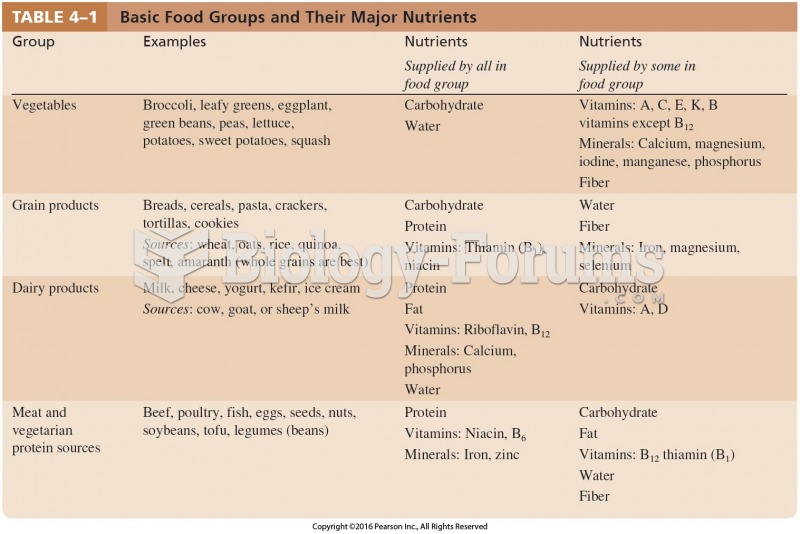Answer to Question 1
During the course of a meal, as food enters the GI tract and hunger diminishes, satiation occurs. As receptors in the stomach stretch and hormones such as cholecystokinin become active, the person begins to feel full. The response: satiation, which prompts the person to stop eating.
After a meal, the feeling of satiety continues to suppress hunger and allows a person to not eat again for a while. Whereas satiation tells us to stop eating, satiety reminds us to not start eating again.
The extent to which foods produce satiation and sustain satiety depends in part on the nutrient composition of a meal. Of the three energy-yielding nutrients, protein is considered the most satiating. In fact, too little protein in the diet can leave a person feeling hungry. Including some proteinsuch as drinking milkprovides satiety and decreases energy intake at the next meal. In contrast, fructose in a sugary fruit drink seems to stimulate appetite and increase food intake.
Foods with a high energy density provide more kcalories, and those with low energy density provide fewer kcalories, for the same amount of food. Foods low in energy density are also more satiating. High-fiber foods effectively provide satiation by filling the stomach and delaying the absorption of nutrients. For this reason, eating a large salad as a first course helps a person eat less during the meal. In contrast, fat has a weak effect on satiation; consequently, eating high-fat foods may lead to passive overconsumption. High-fat foods are flavorful, which stimulates the appetite and entices people to eat more. High-fat foods are also energy dense; consequently, they deliver more kcalories per bite. Although fat provides little satiation during a meal, it produces strong satiety signals once it enters the intestine. Fat in the intestine triggers the release of cholecystokinin a hormone that signals satiety and inhibits food intake.
Eating high-fat foods while trying to limit energy intake requires small portion sizes, which can leave a person feeling unsatisfied. Portion size correlates directly with a food's satiety. Instead of eating small portions of high-fat foods and feeling deprived, a person can feel satisfied by eating large portions of low-fat, high-fiber, and low- energy-density foods.
Answer to Question 2
Appetite prompts a person to eator not to eat. Somehow the body decides how much and how often to eatwhen to start eating and when to stop.
People eat for a variety of reasons, most obviously (although not necessarily most commonly) because they are hungry. Most people recognize hunger as an irritating feeling that prompts thoughts of food and motivates them to start eating. In the body, hunger is the physiological response to a need for food triggered by nerve signals and chemical messengers originating and acting in the brain, primarily in the hypothalamus. Hunger can be influenced by the presence or absence of nutrients in the bloodstream, the size and composition of the preceding meal, customary eating patterns, climate (heat reduces food intake; cold increases it), physical activity, hormones, and illnesses. Hunger determines what to eat, when to eat, and how much to eat.
The stomach is ideally designed to handle periodic batches of food, and people typically eat meals at roughly 4-hour intervals. Four hours after a meal, most, if not all, of the food has left the stomach. Most people do not feel like eating again until the stomach is either empty or almost so. Even then, a person may not feel hungry for quite a while.







